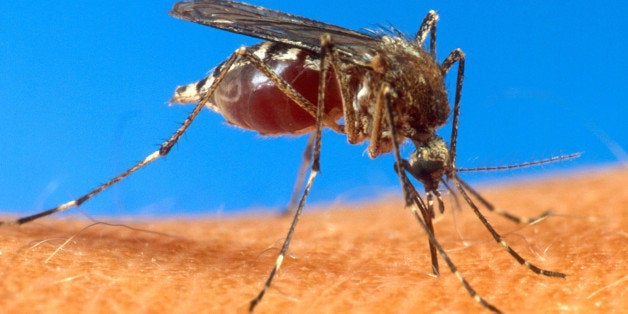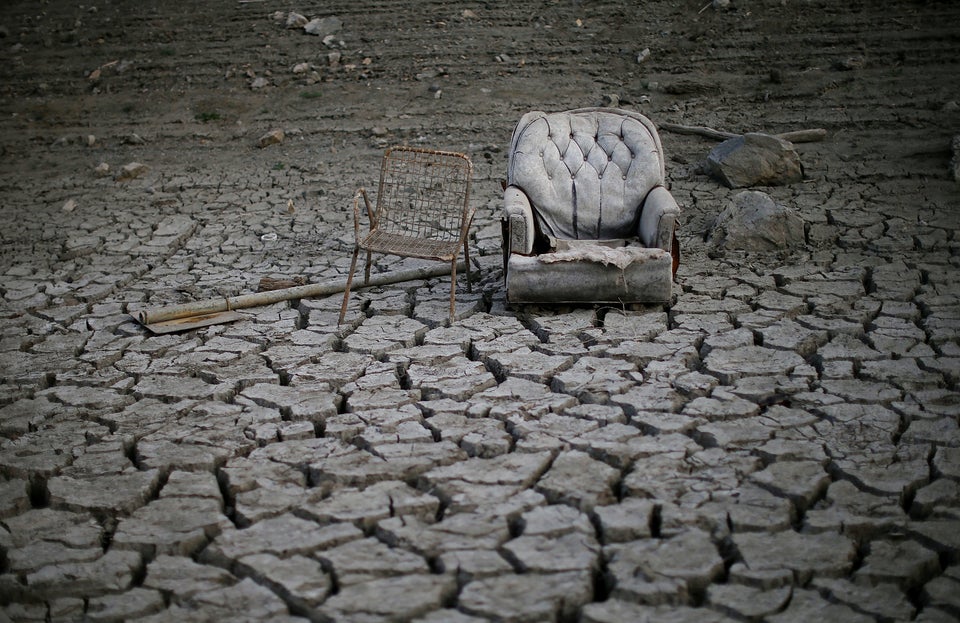
What happens when America’s most populous state runs low on its most precious resource for the fourth year in a row? A lack of rainfall doesn’t just result in problems for farmers, the food industry and people with sprawling lawns. It can have serious consequences that aren’t so obvious. While there have been concerns about California’s relentless drought creating weird-tasting beer and driving a sudden surge in succulent thievery, there are lesser-known side effects that are pretty alarming.
An Increase In West Nile Virus Cases
"The proportion of mosquitoes infected with West Nile virus is at the highest level ever detected in California," Dr. Ron Chapman, director of the California Department of Public Health announced in September. By the end of 2014, the state had recorded 798 human cases, the most since 2005 and more than five times the number recorded in 2011, when the historic drought began. Of those infected, 29 died.
An increase in stagnant pools as streams slow to trickles, coupled with a lack of water in general, may be major factors, experts say.
“A lot of water in nature becomes more stagnant. ... And stagnant water draws mosquitoes,” Dr. Dean Blumberg, an infectious disease specialist at UC Davis Children’s Hospital, told the Sacramento Bee.
Remaining water sources have become crowded, making it easier for the virus to spread between species.
“When water is scarce in drought years, the remaining puddles become critical water sources for insects, birds and animals that all gather at the same locations,” the Contra Costa Mosquito & Vector Control District explains on its website. “This high concentration of birds, which can carry West Nile virus, and mosquitoes which can transmit the virus from birds to people, creates a greater health risk.”
This spring and summer, Californians should anticipate “an intense West Nile virus year,” Sacramento-Yolo Mosquito Control’s Luz Rodriguez told CBS Sacramento this week.
Rat, Rattlesnake and Ant Problems
Rats that normally keep out of sight have been venturing into more human-populated areas. Their sudden presence last spring was the topic of widespread complaints at San Francisco’s Heron Head Park, a popular dog-walking area where rats live underground.
"There's no water source for them right now, so they're going outside to get it," Tina O'Keefe of Dirty Rats Rodent Removal told NBC Bay Area, noting that her business has had a surge in rodent removal requests. "They're going to the dog park because there are water bowls. They're going to horse stables because there's water."
Rats and other rodents moving into human-populated areas mean even more unwanted animals follow. Sacramento’s Len Ramirez, who runs a rattlesnake removal business, told CBS Sacramento that halfway through 2014, it was already one of the busiest years he’d seen in nearly three decades. In just one week in July, he removed 72 rattlesnakes that got too close for people’s comfort.
One invasive ant species, the Argentine ant, has become even more of a nuisance as it moves into San Francisco Bay Area houses to seek refuge from the dry weather.
"It's a bad ant," Brian Fisher, curator of entomology at the California Academy of Sciences, told the San Francisco Chronicle. They bite, they are not easy to get rid of and they are drawn indoors no matter how clean people keep their homes.
Contaminated Water
In some cases, less water means a higher likelihood of coming in contact with contaminated water. Californians who rely on private wells for water, often in the state’s poor, rural areas, are at particular risk, Reuters reports, because there’s a higher concentration of contaminants when there's less water.
"Many groundwater basins in California are contaminated, for example with nitrates from over-application of nitrogen fertilizer or concentrated animal feeding operations, with industrial chemicals, with chemicals from oil extraction or due to natural contaminants with chemicals such as arsenic," Linda Rudolph, co-director for the Center for Climate Change and Health in Oakland, told Reuters.
Wildfires also can spell trouble for water safety.
“In the aftermath of wildfires such as the 2013 Rim Fire,” the U.S. Geological Survey warns, “ash, woody debris and sediment can flow downstream from burn areas and contaminate water supplies.”
Correction: An earlier version of this story misspelled Luz Rodriguez's name.

